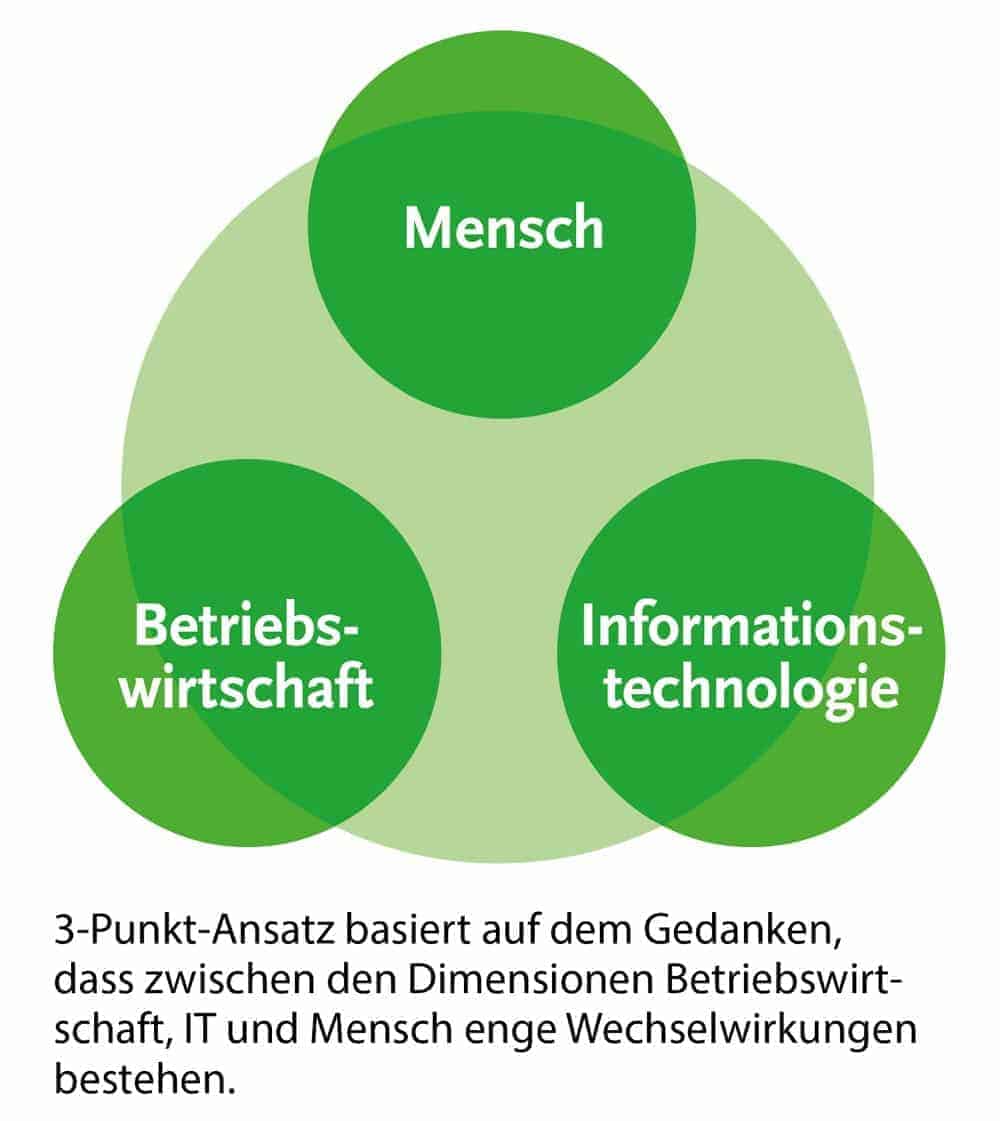3-point approach: people - business management - information technology


It is not new that people have high hopes for the introduction of IT systems. With ERP systems, for example, processes should be harmonized, standardized and simplified.
Measured against these expectations, one is often confronted with disappointing results in everyday life. Many departments suffer from the fact that process customizing is not further developed in line with current requirements.
In this context, companies are under great pressure to compete with process and product innovations. In a process corset that may have been suitable for the requirements at the time of introduction, this is often very difficult to achieve. Want an example?
SAP Variant Configuration
Many companies, especially in mechanical and plant engineering, still do not use the SAP variant configuration function. They are thus giving away the potential of a powerful functionality.
There are further examples of wasted potential in almost all areas of the operational value chain. Where the specialist departments do not see competition-critical processes or functions covered, they then help themselves with workarounds.
These are elaborate provisional solutions, often based on Excel. Although they often contain a lot of expertise and also some finesse in the use of Excel, one could imagine far better, and above all more secure and efficient solutions. One could accelerate processes, make them simpler and thus improve them.
How do digital natives behave?
So it seems that something went wrong in the past. The aforementioned problems will be exacerbated in the future when the next generation aspires to leadership positions.
Digital natives, the generation for whom IT systems are a matter of course in everyday life, will approach this topic in a fundamentally different way than digital immigrants, who have grown into this technology over the course of their lives.
So if systems and technologies have so far been able to unfold their potential in companies with limitations at best, then the question arises as to the causes and what can be improved.
The cause lies in too strong a separation of technical-business-organizational, (information)technological and social factors. What is needed is interdisciplinary consulting that focuses on interactions between the dimensions.
The simplest way to explain this relationship is to use the concept of process. In a business process, a person performs a specific technical task and often uses an IT system to do so.
Process optimization can only succeed if all components are optimally interlinked. Successful consulting requires mastery of the respective technology.
Beyond that, however, a high degree of business expertise is required. It must be clear in which business context a solution is to be developed. This can be explained quite simply, for example, using the availability check function in the sales process.
Depending on whether it is a series or a single-item production, a standard or a customized product, the design of this function will be completely different from a technical and system point of view.
Again, depending on market situations (national, international, seller's market, buyer's market), the function will also differ again within the respective scenario.
Added to this is the dynamic of change. Series products are becoming series products with customized options. Conversely, many individual manufacturers are striving to standardize their products.
This would mean that in both cases the mapping of the process in SAP would have to change. In many companies, however, this does not even begin to happen. During implementation, processes are defined under great time and budget pressure that are often not optimal.
People and business management
Just as an IT solution only ever works in a specific specialist context, business solutions also only ever work in a specific social or cultural environment.
There are companies that tend strongly toward formalized approvals. Others rely on a culture of trust with great autonomy for individual employees. In one case, approvals will be tied to approval procedures, while in the other, responsibility will be delegated more.
Again, the impact on the business solution is severe when setting up system-side workflows and approval procedures.
People and IT
People today differ greatly in their basic attitude toward IT. We have already mentioned the groups of Digitial Natives and Digital Immigrants above.
Depending on which group a user belongs to, he or she will be enthusiastic about different system solutions, but above all about different user interfaces. Acceptance will depend on this to a decisive degree.
Key factor human being
However, the human factor is decisive for the successful design of processes and systems in a completely different context. When they are introduced or changed, the entire working environment often changes as well.
These changes often lead to resistance on the part of those affected. Changes are only experienced as positive if they alleviate the pressure of suffering.
Although this connection is hardly seriously disputed today, and although it is clear that the battle for talent in the future cannot be won with financial incentives (those are a given), but with a productive, meaningful and at the same time pleasant working environment, comparatively little has changed in the communication of change projects (IT projects are always to be regarded as such).
Change management and project communication often play a certain role at the beginning of a project. However, many companies are far away from well thought-out, consistent and sustainable bidirectional communication.
3-point approach
Consultants should always be aware of these connections and have an integrating effect. They should work toward creating real cooperation between the business and IT departments.
Real cooperation goes beyond the exchange of concepts. It's about a shared understanding of problems and working together to find real solutions. It's about interdisciplinary work. More attention needs to be paid to the topic of communication.
Many consultants regard this as a kind of additional qualification, but one that everyone already has in some way. However, new and innovative communication concepts are so important for project success that this topic must be thought about in a completely new way.
Pikon has coined the term 3-point consulting for this and is strategically aligned with this approach. This is based on the conviction that technologies can only unfold their true benefits if business, technological and social factors are considered in an integrated manner.
In the first step, a 360-degree problem analysis ensures that there is the same, or at least a coordinated, understanding of the problem across hierarchical levels and functional areas.
An interdisciplinary team then develops a mission statement for the project. Such a team is made up of executives, project staff, IT specialists, experts from the affected areas, external impetus providers, and communications experts.
So that questions about the concrete meaning of the project can be answered. Based on these considerations, an end-to-end communications concept is drawn up to accompany and permeate the project (see box).
In the 3-point approach, such a communication concept is closely interlinked with the classic project phases. Events and workshops that bring together experts and IT specialists in new workshop formats (e.g., barcamp workshops) are also an integral part of communication in order to initiate an exchange between the business side and IT.
Conclusion
In summary, it can be said that new technologies are of course drivers for new business management processes, sometimes even new business models.
However, the potential will only really be leveraged if genuine cooperation between business and IT departments is set in motion. Communication plays a key role here.
Communication concept for the 3-point approach
Four elements are of utmost importance:
- Resistance management: The point is to recognize resistance, or better yet, to anticipate it. Only those who know where the problems of those affected lie can react appropriately.
- Emotional communication: In Germany in particular, it is still far too common for project communication to be limited to facts, figures and data. If you want to win people over for your projects, you also have to incorporate emotional elements into your communication. Only those who are enthusiastic themselves can inspire others.
- Personal communication: Those affected are first and foremost interested in the very personal impact that the project will have. These points must be clarified first.
- External impulse: Good communication always thrives on the right distance. Communicators accompany the project and provide impetus. However, they are not project managers or clients at the same time.





